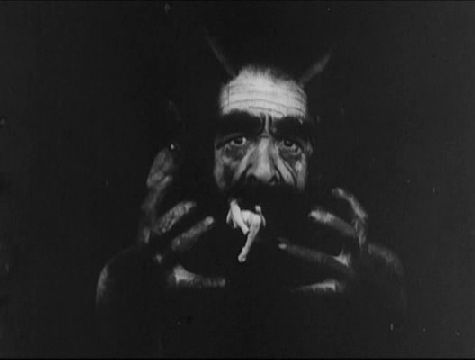L’inferno (1911) 

Director: Francesco Bertolini, Adolfo Padovan, Giuseppe De Liguoro
Cast: Salvatore Papa, Arturo Pirovano, Giuseppe de Liguoro
Synopsis: Loosely adapted from Dante’s Divine Comedy and inspired by the illustrations of Gustav Doré the original silent film has been restored and has a new score by Tangerine Dream.
One can only imagine what the audiences of 1911 made of L’inferno. For a start, most films were still no longer than 20 minutes but this one runs for more than an hour and is filled with some truly bizarre and unforgettable — and quite graphic for the period — images. It follows Dante as he descends the circles of Hell, guided by Virgil, to visit Lucifer himself before ascending to the land of the living once more. Each level through which he passes is more harrowing than the one above it, although the film struggles to convey this as some of the torments of hell that we see look, well, slightly uncomfortable really, rather than a fitting eternal punishment for earthly sins. Other scenes, while not harrowing, particularly, are eerie and effective: the naked souls clambering aboard the boat that will ferry them across the river Charon for example. There’s a lot of male nudity in this film, and while the actors’ more intimate parts are, for the most part, strategically blocked (or contained in nappies), there are times when you’re left wondering whether you really saw what you thought you saw.
For 1911, the film is exceptional, no doubt about it, but on occasion it is let down by some flat shot composition and a noticeable lack of close-ups. However, the one close-up we are treated to is a beauty: the face of a bearded, troll-like Lucifer with a pair of legs sticking out of his mouth. Some of the scenes are almost Pythonesque: early on, for instance, we visit the blameless men who died before the birth of Christ who suffer no punishment but have nowhere to go. This luckless few are seen aimlessly standing around in a field, an image more likely to promote laughter than pity. The sight of dozens of legs scissoring wildly as they poke out from beneath an icy river is also more humorous than harrowing. And the ropey Cerberus has to be seen to be believed.
For every unintentionally funny scene there are a number of effective ones and, given that there is no plot to speak of, the film is imaginative enough to hold the viewers attention — even though things do drag on occasion. Stand-out scenes include the spectacular mountain scenery early on; Mohammed ghoulishly pulling apart the gaping wound in his chest to show Dante; the decapitated head, still talking as it is held aloft by the body to which it was once attached, two brothers banging heads together for all eternity, and that haunting image of Lucifer that is enough to give those of a nervous disposition nightmares.
Anyone with an interest in the history of cinema should make an effort to seek this film out. Rightly famous, it is quite bizarre, unique and — in a way — haunting.
(Reviewed 30th July 2009)
httpv://www.youtube.com/watch?v=iS4We4MDheg
